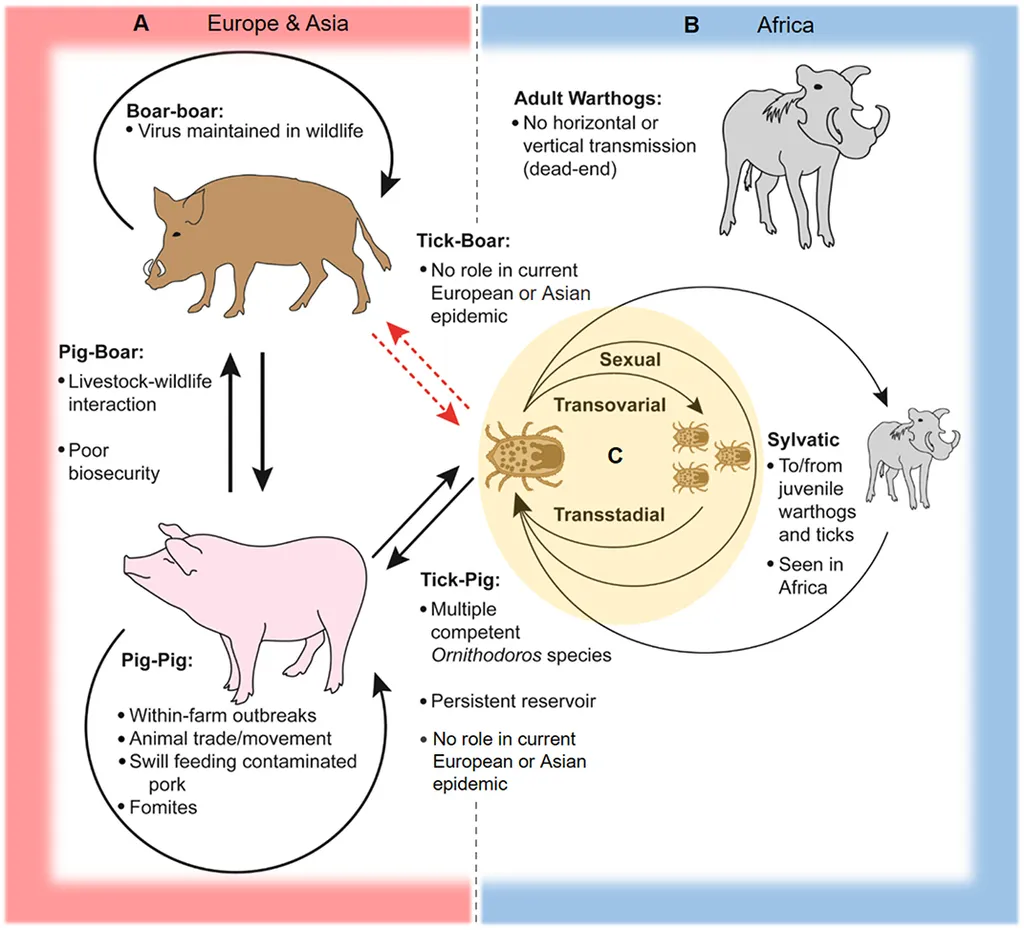In a significant breakthrough for the global fight against African swine fever (ASF), researchers have uncovered a crucial mechanism in the virus’s replication process, opening new avenues for potential treatments. The study, led by Yilin Guo from the State Key Laboratory of Agricultural Microbiology at Huazhong Agricultural University in Wuhan, China, identifies the inner envelope protein pE146L as essential for the virus’s ability to replicate and spread.
African swine fever virus (ASFV) poses a severe threat to the global pig industry, with devastating consequences for livestock and economies alike. Despite encoding nearly 200 proteins, the functions of many remain a mystery. Guo’s research, published in the Journal of Virology (translated as the Chinese Journal of Virology), sheds light on one of these enigmatic proteins, pE146L, and its pivotal role in viral replication.
The study reveals that pE146L, located in the endoplasmic reticulum (ER) lumen, induces ER perinuclear aggregation, a process that is disrupted when the protein is absent. This disruption hinders the formation of viral factories, essentially halting the virus’s ability to replicate. “Understanding this process is a game-changer,” says Guo. “It provides a clear target for developing antiviral drugs that can disrupt the virus’s life cycle and prevent its spread.”
The researchers also solved the first high-resolution crystal structure of the extracellular soluble region of pE146L, discovering that it binds lipids via a positively charged surface patch. This lipid-binding function is critical for viral replication, suggesting a role in lipid regulation. Furthermore, the study found that disrupting the intermolecular disulfide bonds of pE146L dimers abrogates ER aggregation and impedes viral replication.
The implications of this research are profound for the agricultural and veterinary sectors. African swine fever has caused significant economic losses worldwide, with outbreaks leading to mass culling of pigs and severe financial strain on farmers and industries. By identifying pE146L as a key player in the virus’s replication, Guo’s work paves the way for the development of targeted antiviral drugs that could mitigate the impact of ASF outbreaks.
“This discovery is a significant step forward in our understanding of ASFV,” says Guo. “It not only provides insights into the virus’s replication mechanisms but also offers a promising target for the development of effective antiviral treatments.”
The study’s findings highlight the multifunctionality of pE146L in ASFV morphogenesis and provide a promising target for anti-ASFV drug development. As the global pig industry continues to grapple with the threat of African swine fever, this research offers hope for new strategies to combat the disease and protect livestock worldwide. The publication of this work in the Journal of Virology underscores its importance and potential impact on the field.
In the broader context, this research could shape future developments in antiviral drug design and vaccine development. By understanding the specific mechanisms that viruses like ASFV use to replicate, scientists can develop more targeted and effective treatments. This not only benefits the agricultural sector but also has implications for public health, as similar principles can be applied to other viral diseases.
As the world continues to face the challenges posed by infectious diseases, breakthroughs like this one are crucial. They not only advance our scientific understanding but also provide practical solutions that can protect economies and livelihoods. The work of Yilin Guo and his team is a testament to the power of scientific inquiry and its potential to drive meaningful change.

